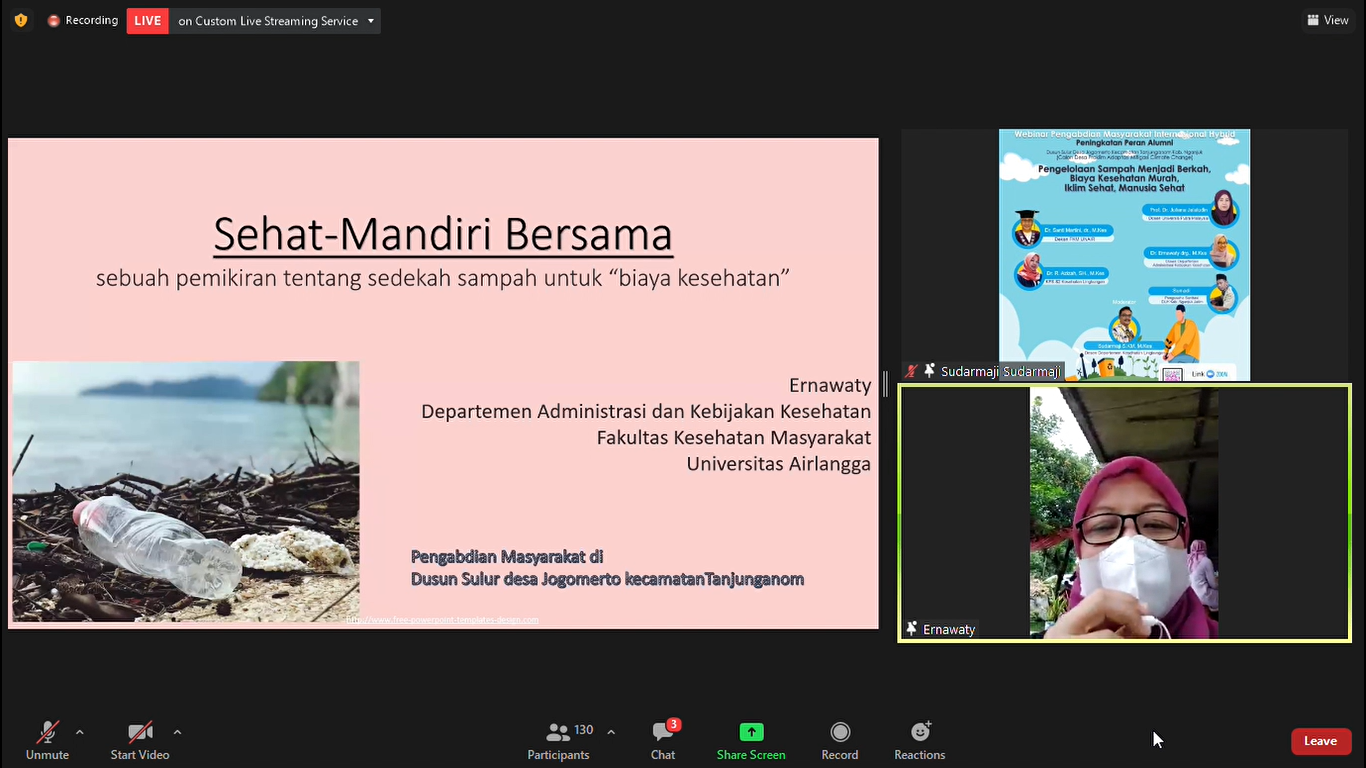UNAIR NEWS – The Faculty of Public Health held a webinar entitled “Hybrid International Community Service Webinar: Increasing the Roles of Alumni in Managing Waste into a Blessing, Cheap Healthcare Costs, Healthy Climate, and Healthy Humans” on Sunday, January 16, 2022. In the webinar, Dr. Ernawaty drg., M.Kes, as one of the speakers, presented the “Sehat-Mandiri Bersama” (Independently-Healthy Together) program from an idea about ‘sedekah sampah’ (waste alms) for “healthcare costs” in community service in Sulur, Jogomerto Village, Tanjunganom District, Nganjuk Regency, East Java.
“There are two things as backgrounds of this activity. First, we are a nation that has a culture of mutual cooperation. Therefore, since we were children, we have built a good habit of visiting sick people. If I look at it from an Islamic point of view, since I am a Muslim, it turns out that visiting sick people has many virtues and will be filled with the grace of Allah,” said Ernawaty.
Second, she continued, Indonesia has a tradition of charity. This tradition is carried out in various events involving sadness (death, illness) or happiness (birth, marriage). The forms of charity are various. They can be in the form of money, goods, or labor. These two things became the background for Ernawaty’s thoughts to create the waste alms program.
However, why do we have to do charity even though the healthcare costs have been covered by the Social Health Insurance Administration Body (BPJS)? Even if you do not have a BPJS card, you can still apply for a Certificate of Incapability (SKTM).
“The answer is because when people get sick, there are two costs. There are direct costs and indirect costs. Direct costs are the costs needed by patients to pay for healthcare and drugs, both of which are now covered by BPJS,” she explained.
Meanwhile, indirect costs are the costs incurred by the patients for non-treatment expenses such as loss of income. When someone is sick, they may not be able to work and have to be hospitalized. This can be counted as a loss of income. Other things that include indirect costs consist of transportation and consumption for the visiting family. The patients may also need something that is not provided by the hospital and spend additional expenses for family members who are left at home.
“There is also an opportunity cost that is lost due to certain choices of activities. When a person is sick, that includes the lost opportunity costs associated with the visiting family. They also lose the time and opportunity to earn a living on that day,” explained Ernawaty.
Ernawaty explained that to cover these indirect costs, saving could be done both independently and collectively. How could you start saving? And what do you need to save?
The answer, explained Ernawaty, is through the waste alms program. At the community service location, Sulur Village, Ernawaty also found “trash treasure,” sorted waste that can be valued for rupiahs. In Sulur Village, there is already a community for processing the “trash treasure” by sorting waste according to its types and then selling it. From these activities, the local economy has improved.
“I hope that in Sulur Village the waste processing community can develop. It would be good if they can sell not only raw materials but also handicrafts made from sorted waste. Thus, they have a higher selling value. If the results can be allocated properly, such as support costs for sick people or delivery process, ‘Sehat-Mandiri Bersama’ in Sulur Village will be realized,” she concluded.
Author: Tyas Ratna Manggali
Editor: Feri Fenoria





